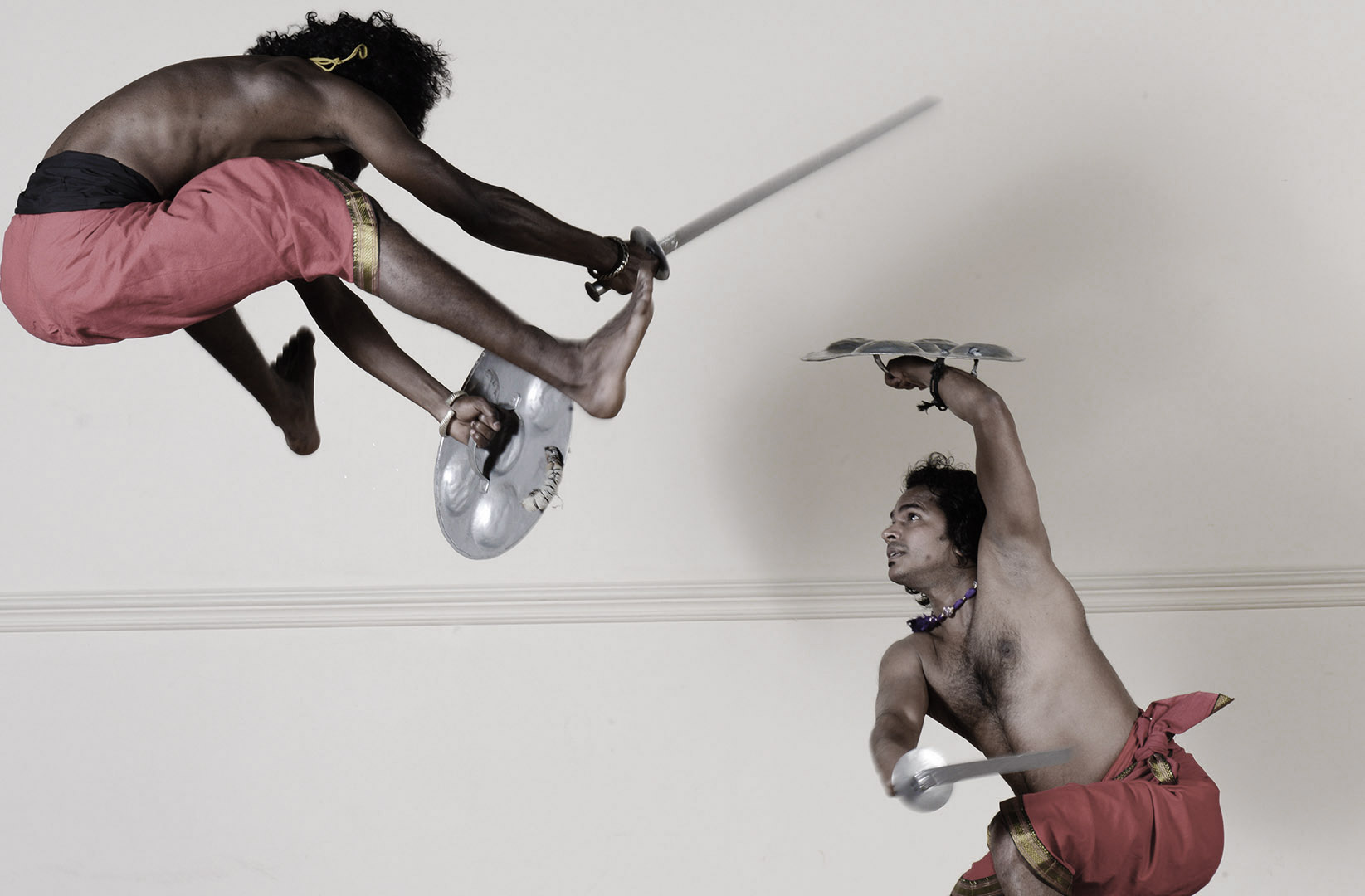History
The Indian martial art forms include: Sillambam (from Tamil Nadu), Vajra Musti (from Karnataka), Shastravidya (from Panjab), Chau (from Orissa), Kalari ppayattu (from Kerala) and many more. Kalari payattu is one of the oldest martial arts in the world; it is not just a martial art, it is a way of life encompassing self-defense techniques, a large repertoire of weapon work, herbal oils and Ayurveda- (Indian medicinal system) based medicinal and massage therapy systems that uphold the physical and emotional well-being of the community. Kalari movements are clearly inspired by animal movements: horse pose, wild boar pose, snake pose, peacock pose, elephant pose and so on. Many martial artists credit Kalari as the “mother of all martial arts,” based on the inscriptions on the walls of Shaolin temple about the Buddhist monk Bodhidharma’s influence in bringing martial arts to China from India:

The first Shaolin temple was built on Wu Tai Mountain in Honan Province in Northern China around 370 AD. The word ‘Shaolin’ means young forest. It was here in the 6th Century that the martial arts were first taught to the temple’s monks by Bodhidharma, an Indian Buddhist monk.
Traditionally, the Shaolin monks would meditate for many hours each day. This ritual made them spiritually strong but physically weak. To keep the monks healthy, Bodhidharma taught them Chi Kung exercises based on yoga breathing and animal fighting movements.
Many believe that what Bodhidharma brought to China from India was Kalari ppayattu. There are also references to martial art practices in South India since the Sangam time. Scholars have estimated the date of Sangam Age approximately between 300 BCE and 300 CE.